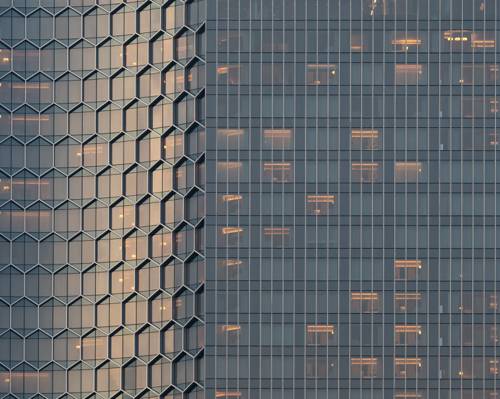
FAQ About The Role of Architectural Lighting in Urban Environments

What is architectural lighting in urban environments?
Architectural lighting in urban environments refers to the strategic use of artificial light to enhance and emphasize the aesthetic and functional aspects of buildings, landscapes, and public spaces within a city. It involves designing lighting solutions that not only highlight the architecture but also contribute to the overall ambiance of urban areas, improving safety, usability, and energy efficiency.

How does architectural lighting impact cultural identity in cities?
Architectural lighting plays a significant role in shaping the cultural identity of cities by highlighting landmarks, cultural spaces, and historic architecture. It allows cities to project their unique character and heritage, supporting nighttime tourism and cultural activities. By illuminating iconic structures and public art, architectural lighting can promote a sense of pride and belonging among residents.

Why is energy efficiency important in architectural lighting?
Energy efficiency is crucial in architectural lighting because it helps reduce the environmental impact of urban lighting systems. By using energy-efficient lighting fixtures, such as LED lights, cities can minimize their carbon footprint, reduce electricity costs, and diminish light pollution. This contributes to sustainable urban development and ensures that urban lighting systems remain economically feasible in the long run.

In what ways can architectural lighting improve safety in urban areas?
Architectural lighting can improve safety in urban areas by enhancing visibility in streets, parks, and public spaces. Well-lit environments deter crime and help pedestrians and drivers navigate safely. By carefully planning the placement and intensity of lighting fixtures, urban planners can reduce blind spots and ensure that all areas are appropriately lit to promote safety for all city dwellers.

What is the relationship between architectural lighting and nightlife in cities?
Architectural lighting significantly contributes to the nightlife in cities by creating vibrant and inviting nighttime environments. It enhances the visibility and appeal of nightlife venues such as bars, restaurants, and theaters, encouraging social interaction and economic activity after dark. Effective lighting designs can transform cityscapes into lively and attractive destinations, fostering nightlife tourism and community engagement.

How does architectural lighting affect the visual aesthetics of a cityscape?
Architectural lighting dramatically impacts the visual aesthetics of a cityscape by drawing attention to building facades, structures, and significant city landmarks. Through strategic use of color, brightness, and lighting angles, designers can highlight architectural features that might go unnoticed during the day. This creative illumination can define the skyline, contribute to a city's iconic look, and enhance its nighttime visual identity.

What are some common techniques used in architectural lighting design?
Common techniques in architectural lighting design include uplighting, downlighting, silhouetting, shadowing, and grazing. Uplighting involves placing lights at ground level to cast light upward onto a structure, enhancing its presence and grandeur. Downlighting is used to illuminate areas below the light source for safety and accentuation. These techniques, among others, allow designers to add depth, texture, and focus to urban environments.

What challenges do designers face in architectural lighting for urban spaces?
Designers face several challenges in architectural lighting, including light pollution, energy consumption, and the need to balance aesthetic goals with functional requirements. They must also consider the potential impact on local wildlife and the residents' quality of life. Ensuring that lighting designs comply with regulation and ordinances while meeting the city's cultural and environmental needs is a complex task.

How can architectural lighting reduce light pollution in cities?
To reduce light pollution, architectural lighting can be designed with shielding and directed lighting techniques that focus light only where it is needed. Using LED lights and dimmers can help control the brightness and timing of lights, minimizing unnecessary light spill into the sky and residential areas. Strategic planning and adherence to 'dark sky' principles can effectively curtail light pollution in urban settings.

What role does technology play in architectural lighting designs?
Technology plays a pivotal role in modern architectural lighting designs, enabling energy-efficient solutions, customization, and smart lighting systems. Advances such as LEDs, programmable lighting controls, and motion sensors allow designers to create dynamic lighting schemes that adapt to the environment and user needs. Innovative technologies expand the possibilities for creative and sustainable lighting projects in urban settings.

How do architects collaborate with lighting designers on projects?
Architects collaborate with lighting designers by integrating lighting considerations early in the design process. This collaboration ensures that lighting enhances the architectural intent and meets functional requirements such as safety and energy efficiency. Through joint efforts, they create cohesive designs where structural elements and lighting work in harmony, making the built environment aesthetically pleasing and practical.

What is the importance of lighting regulations in urban planning?
Lighting regulations in urban planning ensure that architectural lighting aligns with public safety, energy conservation, and community standards. Regulations provide guidelines on acceptable light levels, energy usage, fixture types, and zoning restrictions. By adhering to these standards, cities can promote sustainable and responsible lighting practices that enhance public spaces without causing harm or disruption to residents and wildlife.

How can architectural lighting be sustainable?
Sustainable architectural lighting involves the use of energy-efficient lighting fixtures, renewable energy sources, and recycling materials. Implementing smart lighting technologies, such as daylight sensors and automated dimming systems, also contributes to sustainability. Designers focus on reducing the carbon footprint associated with lighting installations by selecting eco-friendly products and minimizing energy usage without compromising on effectiveness.

What effect does architectural lighting have on real estate value in urban areas?
Architectural lighting can positively impact real estate value by enhancing the attractiveness and perceived safety of an area. Well-lit neighborhoods and commercial districts are more appealing to potential buyers and investors, driving up demand and property values. Lighting that accentuates the beauty and functionality of buildings can set a property apart, making it a desirable location and contributing to increased market value.

Can architectural lighting support cultural events and festivities?
Yes, architectural lighting can support cultural events and festivities by creating dynamic lighting displays that enhance the celebratory atmosphere. Light shows, color displays, and projections can be used to convey thematic messages, celebrate traditions, and invite community participation. Strategic lighting design adds to the vibrancy of events, drawing more visitors and fostering a sense of community pride and involvement.

How is the ecological impact of architectural lighting assessed?
The ecological impact of architectural lighting is assessed by examining factors such as energy consumption, light pollution, and effects on local wildlife. Environmental impact assessments (EIAs) may be conducted to evaluate how lighting installations align with sustainability goals and minimize negative effects on ecosystems. These assessments guide the implementation of environmentally conscious design practices.

What are some innovative trends in architectural lighting?
Innovative trends in architectural lighting include the integration of interactive elements and smart technology, such as IoT-enabled lighting systems, which allow for greater control and customization. Bioluminescent and solar-powered lighting solutions are also gaining traction, offering eco-friendly alternatives. Designers increasingly use light as a medium for public art installations, blending functional lighting with creative expression.

How have historical buildings adapted to modern architectural lighting?
Historical buildings have adapted to modern architectural lighting by incorporating advanced technologies that respect conservation principles while enhancing aesthetics. Sensitive restoration includes using LED lighting that replicates traditional lighting tones, integrating lighting systems that protect and showcase historical features. This careful adaptation preserves the integrity of heritage sites while allowing them to be appreciated in new ways.

What is the significance of color temperature in architectural lighting?
Color temperature in architectural lighting refers to the hue of the light emitted, measured in Kelvin (K). It significantly influences the mood and visual perception of spaces. Warmer color temperatures (below 3000K) create a cozy, intimate atmosphere, while cooler temperatures (above 4000K) are used in environments requiring alertness and clarity. Selecting the appropriate color temperature is essential for achieving the desired ambiance and function in urban designs.
